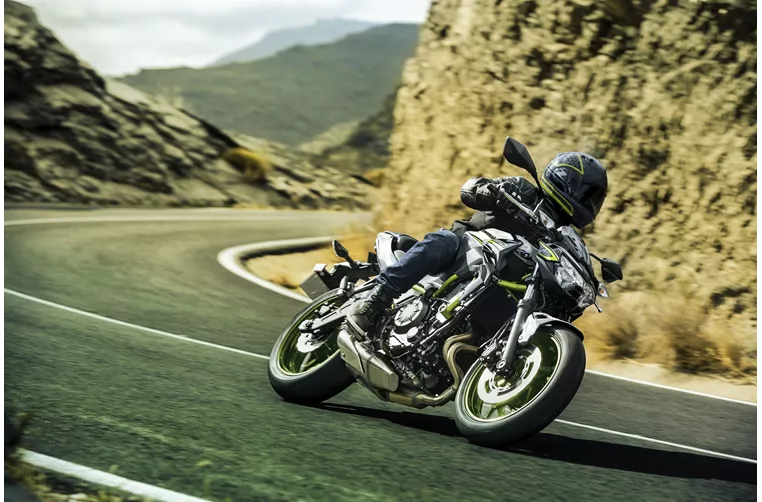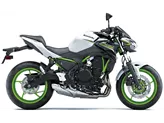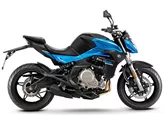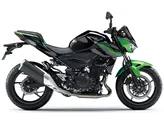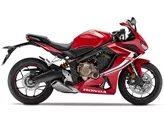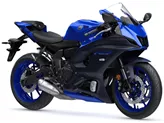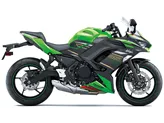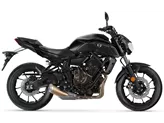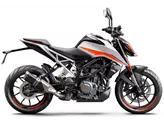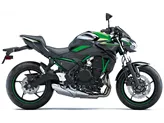Kawasaki Ninja 650 2017 vs. Kawasaki Z650 2021

Kawasaki Ninja 650 2017
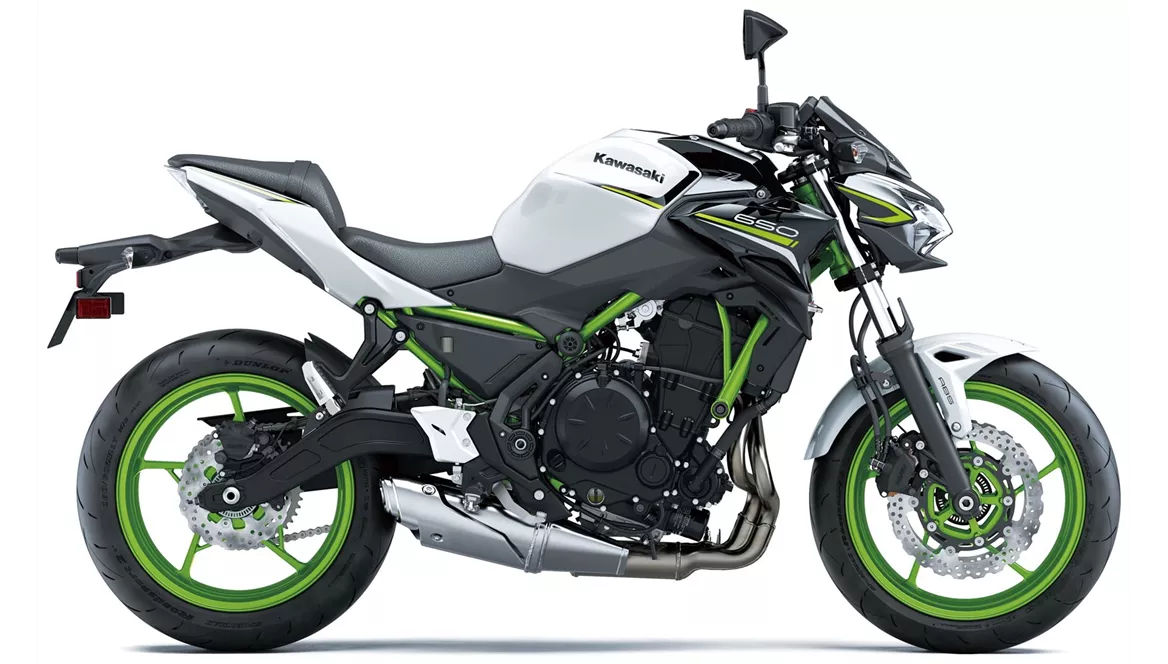
Kawasaki Z650 2021
Overview - Kawasaki Ninja 650 2017 vs Kawasaki Z650 2021
When comparing the Kawasaki Ninja 650 model year 2017 and the Kawasaki Z650 model year 2021, it is important to note that both bikes share many similar technical specifications. They both have an inline engine with a bore of 83 mm and a stroke of 60 mm. The engine power and torque are also identical at 68.2 HP and 65.7 Nm respectively. The compression ratio, fuel system, throttle bore, cylinders, valves per cylinder, and cooling system are all the same as well. Both bikes have a displacement of 649 ccm.
In terms of suspension, both the Ninja 650 and Z650 feature a telescopic fork front suspension with a diameter of 41 mm. The rear suspension consists of a swing arm with a monoshock and preload adjustment. The chassis of both bikes is made of steel and has a tubular frame. The rake and trail measurements are also identical at 65.5 degrees and 100 mm respectively.

Kawasaki Ninja 650 2017
When it comes to braking, both bikes have double disk brakes at the front with a diameter of 300 mm and double piston technology. The brakes also feature petal technology. Both bikes are equipped with ABS as part of their advanced rider assistance systems.
In terms of dimensions and weights, both bikes have the same front and rear tire widths and diameters. The wheelbase, seat height, and fuel tank capacity are also identical. However, there is a slight difference in the kerb weight (with ABS) between the two models. The Ninja 650 2017 weighs 193 kg while the Z650 2021 weighs 187.1 kg.
Now, let's discuss the strengths and weaknesses of each bike. The Ninja 650 2017 is known for its transparent chassis, which provides a sporty feel and good handling. It also has excellent brakes and a sharp look inspired by the ZX-10R. The engine is resilient and offers a playful riding experience. However, some riders may find that the series exhaust does not produce much sound, and there may be slight vibrations from the engine.
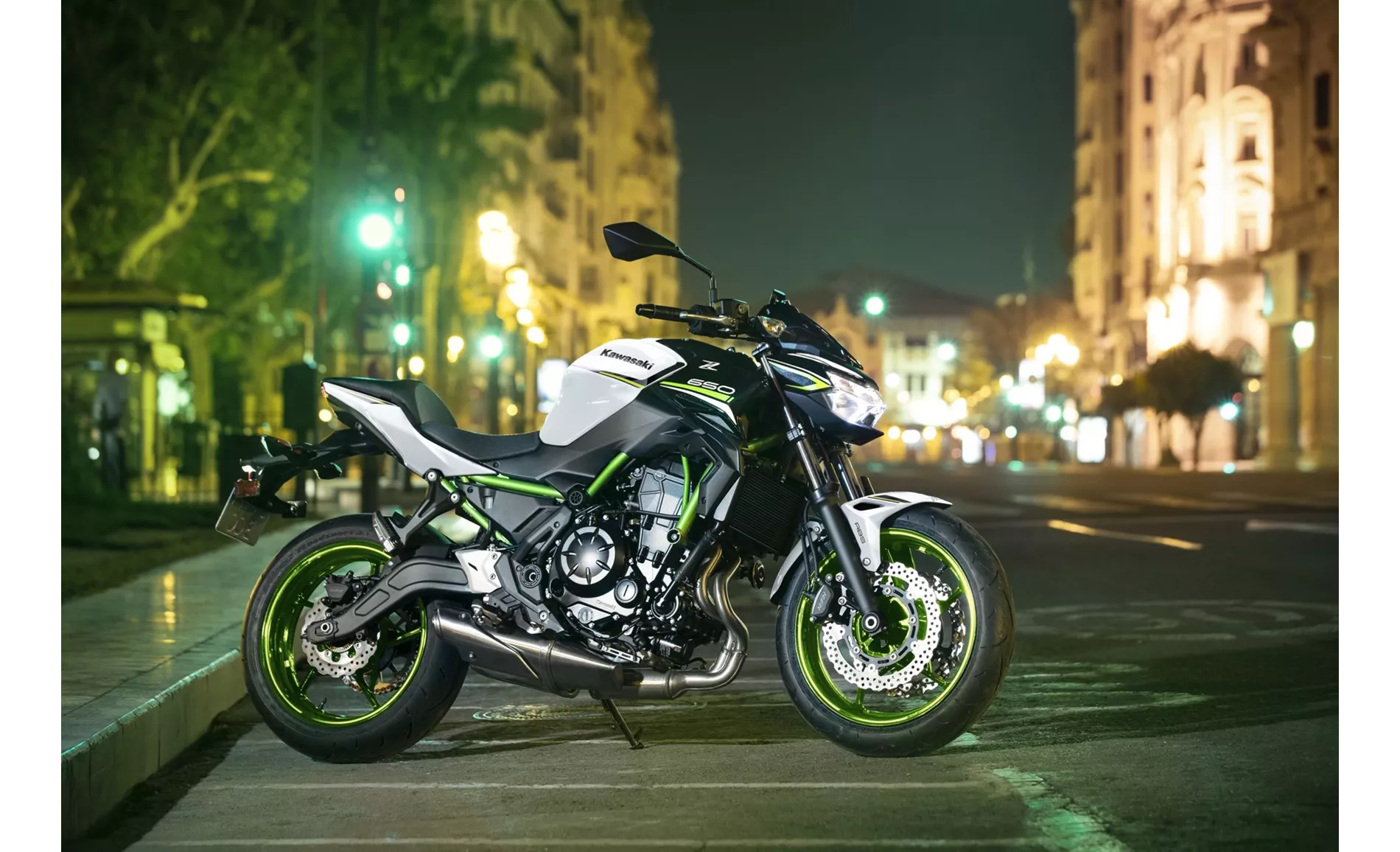
Kawasaki Z650 2021
On the other hand, the Z650 2021 has several strengths of its own. It is known for its accessible two-cylinder engine and compact dimensions, making it suitable for riders of all skill levels. The low seat height is also a plus for shorter riders. The chassis is stable, providing a confident riding experience. The bike features a TFT display with connectivity, adding a modern touch. Additionally, the Z650 has a more mature and grown-up look compared to its predecessor. However, taller riders may find the bike uncomfortable, and some riders may feel that the adrenaline level in the saddle is lower compared to competing models.
In conclusion, both the Kawasaki Ninja 650 2017 and the Kawasaki Z650 2021 have their own strengths and weaknesses. The Ninja 650 offers a sportier feel with excellent brakes and a sharp look, while the Z650 provides accessibility and a more mature design. Riders should consider their preferences and riding style when choosing between the two models.
Technical Specifications Kawasaki Ninja 650 2017 compared to Kawasaki Z650 2021
Pros and Cons in comparison
Pros and Cons in comparison
Kawasaki Ninja 650 2017

The Ninja 650 firmly stamps its predecessor (Er-6f). The engine has mastered the Euro 4 hurdle well and serves up a very usable 68 hp, the chassis is simply great for this class, and the weight reduction of 18(!) kilos compared to the ER-6f justifies reverent nods.
Kawasaki Z650 2021
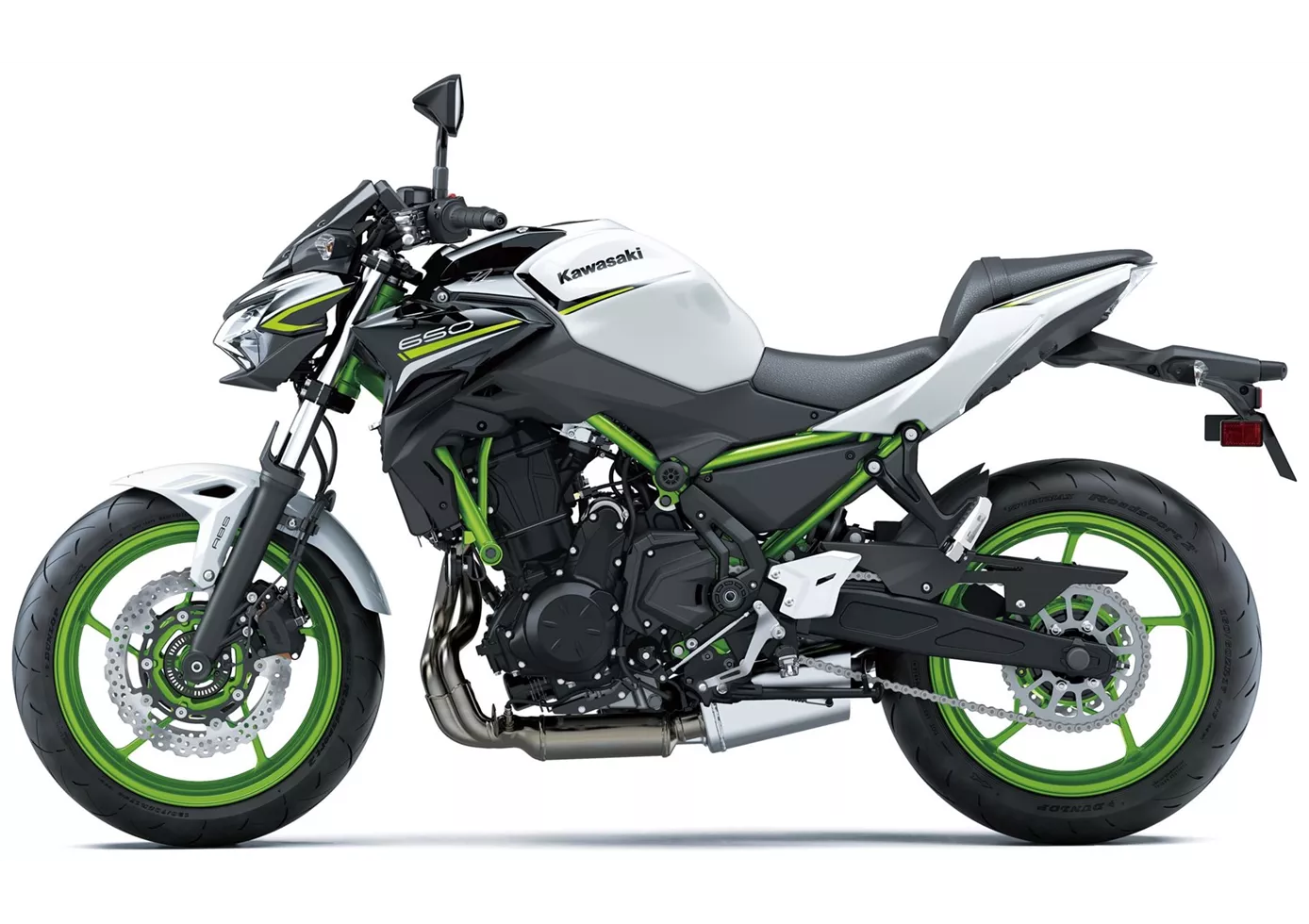
Even in 2021, the Kawasaki Z 650 stands for easy riding with great looks and good equipment. Both seat height and engine are very accessible and will give both experienced riders and newcomers a lot of pleasure. If you are looking for an honest naked bike without any big surprises, this is the bike for you. Due to its compact dimensions, however, you should try it out before buying and perhaps go for the raised seat.
Price Comparison Avarage Market Price Kawasaki Ninja 650 vs Kawasaki Z650
There are a few key differences between a Kawasaki Ninja 650 2017 and a Kawasaki Z650 2021. In terms of price, the actual average prices of both motorbikes are almost the same. Compared to Kawasaki Z650 2021 there are less Kawasaki Ninja 650 2017 bikes available on the 1000PS.de Marketplace, specifically 7 compared to 25. It takes less time to sell a Kawasaki Ninja 650 with 96 days compared to 106 days for a Kawasaki Z650. Since model year 2017 1000PS.de editors have written 20 reviews for the Kawasaki Ninja 650 and 31 reviews for the Kawasaki Z650 since model year 2017. The first review for the Kawasaki Ninja 650 was published on 04/10/2016 and now has more than 79,600 views. This compares to more than 25,000 views for the first review on Kawasaki Z650 published on 08/11/2016.

